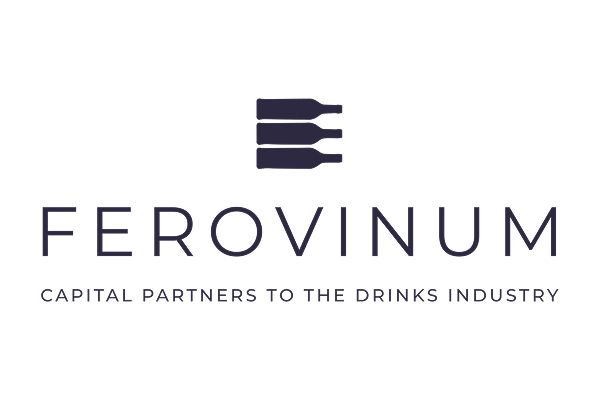MUST Fermenting Ideas does not shy away from the big issues. In fact it tackles them head on. In part one of our reports we look at how the industry is facing up and finding answers to big issues such as climate change, biodiversity, terroir, organics, and natural wine.
It might have been setting the bar a little high when wine journalist and co-founder of the MUST Fermenting Wine conference, Rui Falcão, claimed in his opening speech that the event’s ultimate goal was to “change the world” but it certainly demonstrated quite how seriously this breakthrough summit is trying to make an impact on the wider wine industry.
For those lucky enough to have been at its third conference last week, in the beachside resort of Cascais just north of Lisbon, it was certainly an opportunity to take a deep dive into a truly diverse range of subjects. We might not, to be fair, have “changed the world” but for those three days the glare of the global wine Twittersphere was well and truly on what was being said and discussed at MUST.
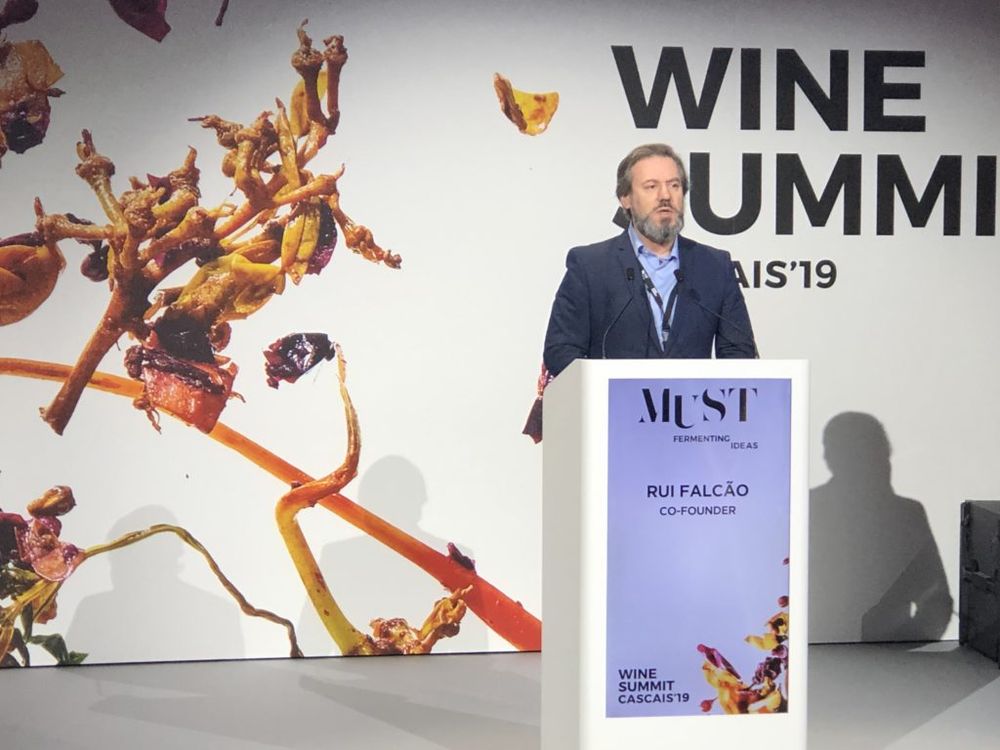
Rui Falcão, one of the co-founders of MUST, opens last week’s event
Yes, it could do with more delegates, and the conference programme could deal with wider, more commercial business issues, but in the main this really is a MUST event to go to.
Most of all it is a time, an opportunity, to stop, listen and open your mind to different views on a whole range of topics from orange wine, biodiversity, terroir, climate change, social media, consumer data, DTC, tourism and a whole lot more.
It very much built up to what Falcão hoped would be a collective “think tank” able to “share ideas” and “visions” for the rest of the industry to take notice of.
Stand out event
What makes the MUST Fermenting conference stand out from other wine summits is there is no room for sponsor presentations. Instead serious, top of their game presenters are given an hour to really get to grips with and take a deep dive into whatever subject they are tackling. Allowing the audience the opportunity to go on the same journey and truly understand the opportunities and challenges within those business areas.
This is the nearest thing the wine industry gets to the famous TED talks that none of us can afford to go to. Crucially each session also gives at least 15 to 20 minutes for questions and debate. The fact there were so many hands up during each session shows just how interactive and engaging the different talks were.
There are no rushed 20 minutes panel debates that end up being like the wine conference equivalent of fast food. Great on paper, but no substance and nothing to remember.
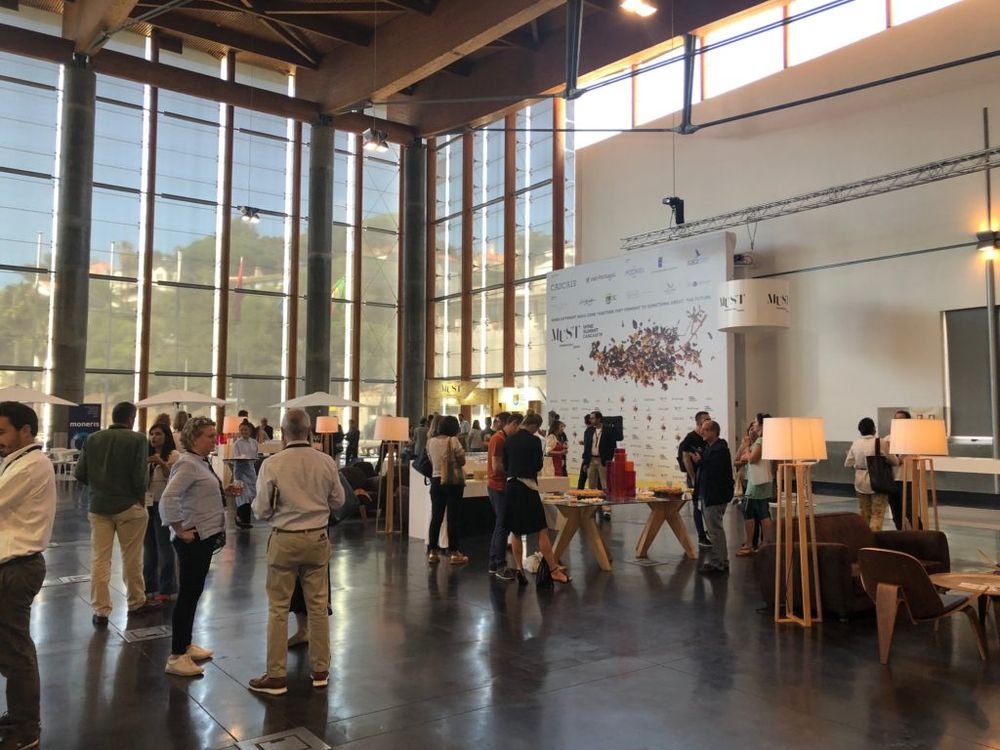
The MUST conference is now in its third year and gathering momentum as a key event of the year
Stand out talks
The highlights at MUST kept on coming. Here are just a few:
- Miguel Torres waking us all up to the threat of climate change and the steps it is taking to reduce carbon emissions across its wineries by 30% like investing 11% of its annual profits in sustainability initiatives.
- Paul Mabray delivering a blistering speech about the possibilities of digital media and engaging directly with consumers in ways not even plausible a few years ago.
- Meininger’s editor, Felicity Carter, pinpoint analysis of the steps wine companies are now taking to target and engage men with wine.
- Simon Woolf making a convincing case for why and how orange wine is now a global movement with an “orange scene” in at least 35 countries and counting.
- Isabelle Legeron taking natural wine to the next stage with a thought-provoking and challenging talk on the kinds of wine the industry should now be making if it truly wants to claim to being sustainable and relevant to consumer needs.
- Pedro Ballesteros Torres MW and his fascinating trip back into history, and his claim that wherever miners have been, the wine industry has followed.
- Pedro Parro who succeeded in making an hour on terroir captivating and being able to explain how one vineyard can produce the equivalent of a McDonalds and Michelin restaurant meal.
- Ntsiki Biyela and her inspiring and personal story of how she went from a village in Kwazulu-Natal to becoming one of the first black South African female winemaker and the challenges and now opportunities that has brought.
- Lenz Moser on not only thinking about making wine in China, but succeeding, and all the hurdles that has involved.
- Rui Falcão and his intriguing analysis of Colares, the Portuguese wine region that is close to extinction.
Issues that might not be part of our individual job descriptions, but are all part of our collective need to address the challenges the global wine industry faces.
Grown up debate
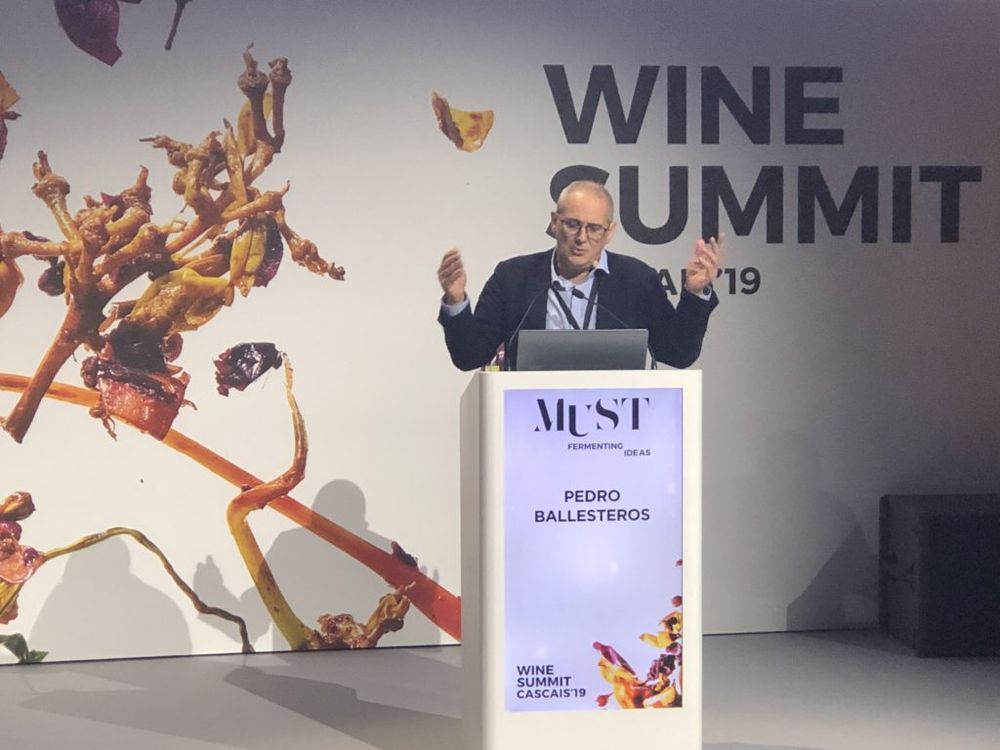
Pedro Balllesteros MW urged the wine industry to work together more
Challenges that, in the main, need a different approach, a new way of thinking if the wine industry is going to really tackle them. It will certainly fail if producers the world over continue to fwork in isolation, score their own points, and don’t take a more considered, collegiate view, said respected Spanish wine consultant, Pedro Ballesteros MW.
“That’s wine’s biggest disadvantage,” he said. “I see it in France, iItaly, Spain and Portugal. Too many wineries working on their own. A producer from Rioja hates being next to another (Spanish) producer.”
We have to operate and meet the demands of the world we live in. One that is increasingly dependent on trade and the relationships key exporting and importing countries have with each other.
“Fine wine,” he said is “100% dependent on trade, and 99% of that is dependent on international trade. That is the biggest threat to wine.”
What are we doing?

Miguel Torres demonstrated what producers can be doing to tackle climate change
One of the central themes of the conference was how and why producers are making the wine they do. Particularly when it comes to addressing the sustainability issues of winemaking and what is going to be the most suitable and appropriate way for producers to operate in the future.
Whilst Miguel Torres does not forsee a situation in his lifetime when it would not be suitable or appropriate for him to make wine in Spain and Chile, we are all collectively sleep walking into a situation when it won’t be possible to make wine in many parts of the word.
“If we go past another 1.5 degree increase in temperature then it will become very difficult and we have to look at new places to make wine,” he said. “All we know is that everyone should make an effort in their own lives and do what they can.”
Torres certainly forsees a time when glass bottles could be a thing of the past in the wine supply chain. Particularly as they alone account for around 30% of the emissions from an average winery. It is already being asked for alternative packaging from the Scandinavian monopolies and believes it will become more mainstream down the line with supermarkets promoting products in their own carbon friendly shopping aisles
Retail and restaurant groups, he said, will look to work more with suppliers that are in control of all the emissions and energy use within its own supply chain. Including their own supplier base. It now gives out awards to those businesses it works with that have gone the extra mile in cutting down on waste and emissions.
Then there is what you do with your own waste. Torres has set itself a bold target of beingable to re-use 10% of its own carbon, up from 1% now.
“I don’t think we have sold one more bottle due to what we have been doing, but it is happening and will do more,” he said. “Sommeliers can help a lot to propagate the message.”
Need to do more
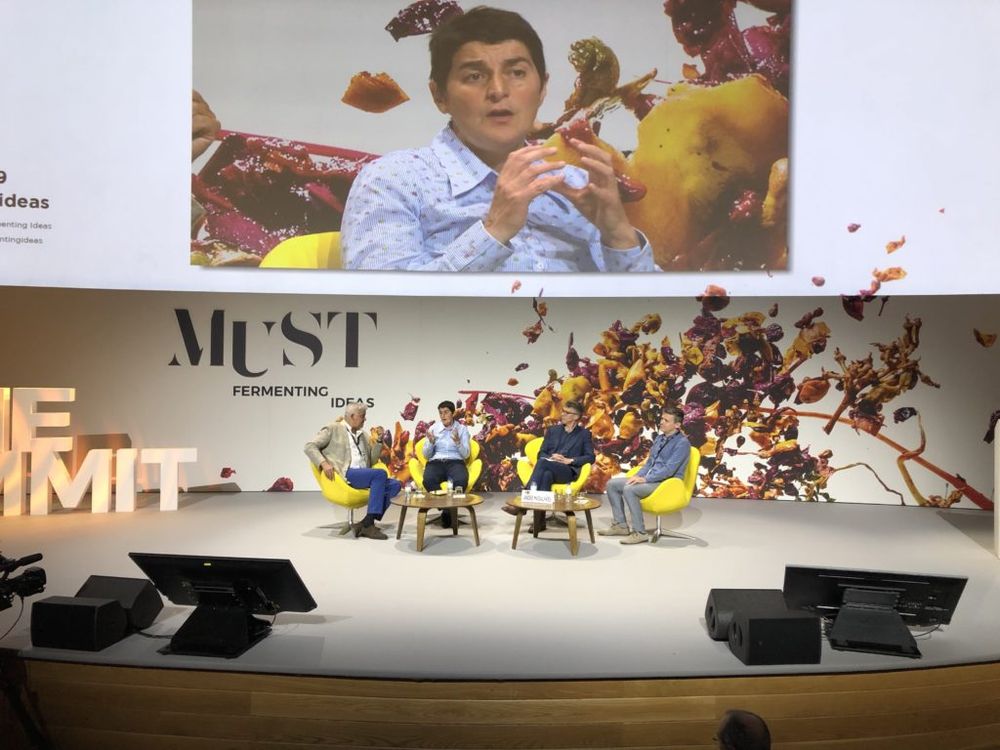
Isabelle Legeron MW said the wine industry needs to wake up more to its own impact on climate change
The conference heard from a number of speakers about how a greater focus on terroir, biodiversity,and a better understanding of the full ecosystem in which vineyards operate is very much the way forward.
Isabelle Legeron MW, one of the leading, most influential voices on natural wine and founder of the RAW series of natural wine fairs since 2012, made an impassioned plea for the industry as a whole to take a much longer, and harsher look at the impact it is having on the environment through the wines it is making and selling.
She also warned if it does not not act now then consumers are ready and waiting to pick up the baton for them and go off and choose to drink something else.
“Times are changing and the consumer is changing. This in turn going to change the wine industry. We as an industry have kept our heads buried in the sand for too long,” she said.
“Does it matter what we drink? I think it does” she added. “It matters for the health of the planet. We don’t just make wine. We are part of a farming world. We’re not just a bottle of wine that ends up on the bar or table.”
She also questioned how far winemakers and producers are really willing to go. “Organics is not something to strive for. It is the starting point,” she stressed. “When I taste wine I don’t look for oak, but for the vineyard and texture from the berry and the terroir.”
It’s why she is such an advocate for natural, organic and biodynamic wines. If the wine industry can change then there is a dynamic and growing consumer base waiting for more natural, organic and biodynamic wines.
“When I created RAW I wasn’t interested in what the wine industry had to say. I bypassed them because I care about what the consumers have to say,” she claimed. “We’re gaining critical mass, it’s not fashion anymore. There’s a huge opportunity: by championing natural wine, we can have an impact on the environment.”
She added: “Young consumers don’t want to read tasting notes or look at scores. They want real stories and experiences. They’re not excited by the intellectualisation of wine.”
The birds and the bees
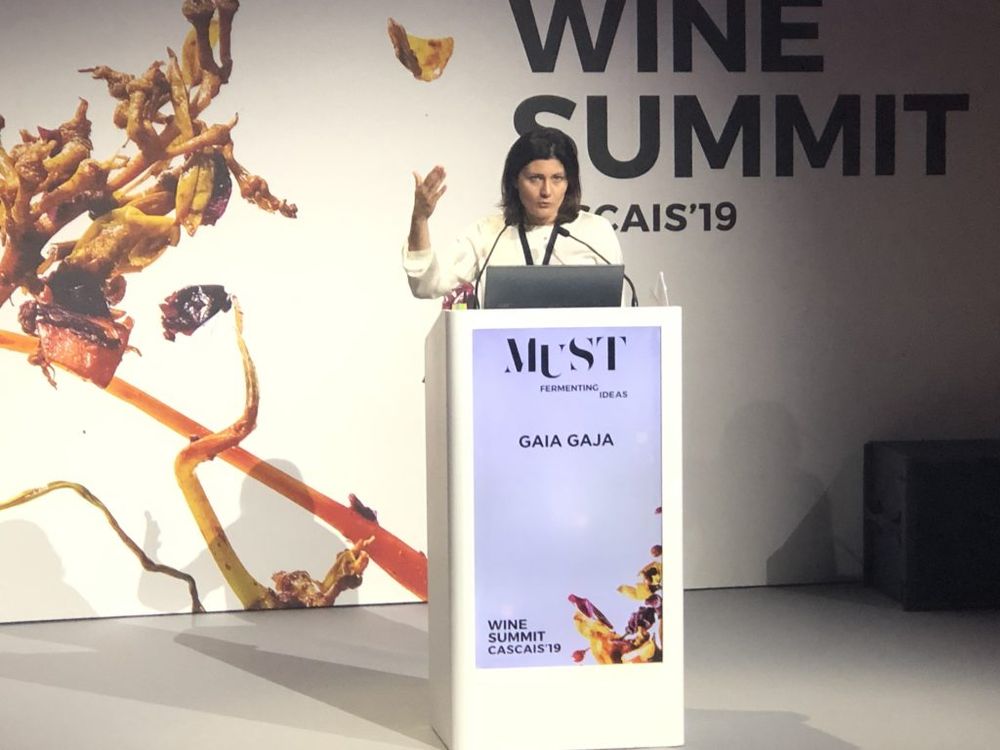
Biodiversity has helped the Gaja’s take a soils and nature first approach and not be just focused on their vineyards
Gaia Gaja explained how over the last 10 to 15 years the acclaimed Italian producer had changed the way it worked to put biodiversity at the heart of what it does. It has meant rather than take a vine first approach to winemaking, it has turned everything on its head to look at soils and vegetation and biodiversity first. What steps and measures does it need to take bring life and create life in the vineyards’ soils, grasses and flowers. Those are the benchmarks it now uses to judge how healthy a particular vineyard is, not the level of nitrogen, potassium or sulphur there might be to help the vines.
The biodiversity first approach meant it was now not taking measures to go in and try and protect and save its vines, but rather look at what needs to be done to help vines look after themselves, to become more resistant and stronger to cope with the changes in climate.
“For vines to survive they need to be surrounded by an area that gives them a chance to survive,” she said. “The more connected the vines are to their local environment the more chance they have.”
Before it took this approach it might find four or five different types of grass in an average vineyard, now it is finding 10 or 12.
It has also changed the way it plans its vines for the future. “Thirty years go ago when we started our nursery we did so based on what vines looked healthy in our vineyards. Ten years ago we reconsidered this thinking more about biodiversity,” she explained.
Instead it looked for vines that have been hit by disease and monitored those over a 10 year period. “Normally they are the vines you take out, but instead we looked to see how they behaved over 10 years. Some died, but some found a way to survive. They learnt how to become resilient.”
Those are the vines it now uses to grow the vines it wants in its nursery. Those are the vines that are going to be able to cope with the unpredictable changes we are seeing in the environment.
It was a theme also picked on by New York Times wine critic, Eric Asimov. He said the issue of climate change was now so paramount that it was inconceivable when making fine wine to not take into consideration your impact on the planet. He certainly welcomed producers in Bordeaux becoming far more open to the idea of following organic practices.
“Climate change causes us to think about things in a different way,” he said. “It’s not just about what is going to help soil health and the quality of grapes,but also our carbon footprint. We need to find ways that benefit agriculture and the planet.”
“Biodynamics,” he added” “is just one form of that. But then he questioned whether producers can really be truly biodynamic when they are effectively operating in a “mono culture” and can’t control what their neighbouring producers and growers are doing.
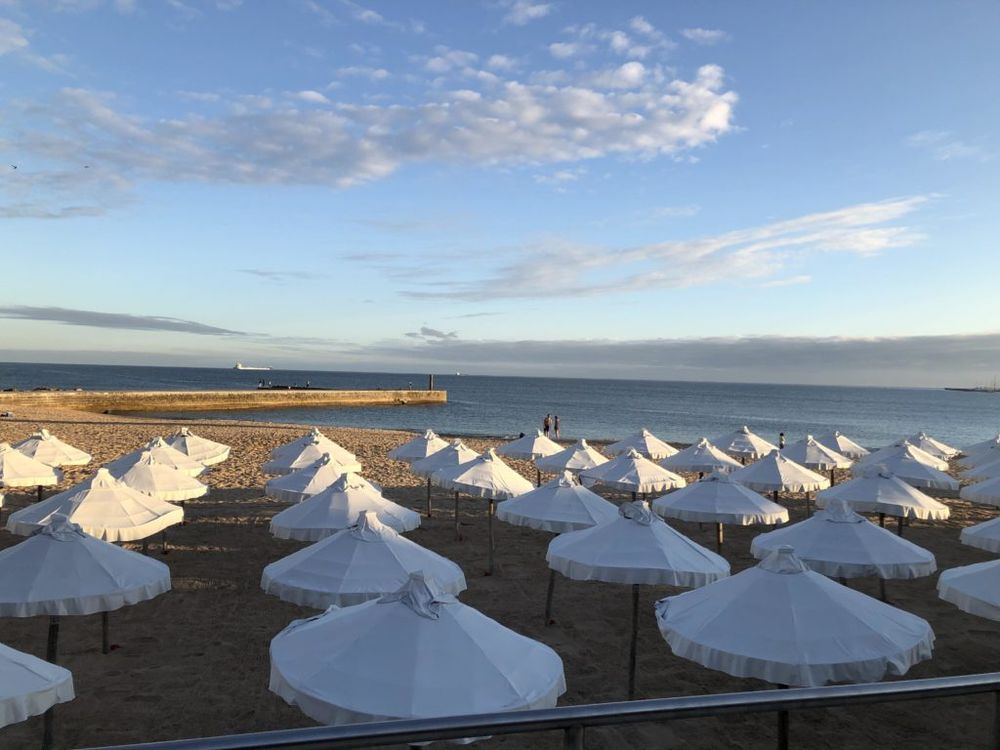
Estoril Portugal: not a bad place to put the world to rights…
Maturing later
Miguel Torres said it has been carrying out tests, since 2006, at one of its Catalonia vineyards to see what steps it can take to adapt its vineyards to delay ripening and become more resistant to climate change. It now has 12 different trials underway, including reducing vine density in order to increase vigour and help the grapes ripen later in September when it is cooler at night.
“We have to delay ripening in order to carry on making the wines we want to make. We avoid de-leafing, have longer vine trunks and raise the canopy of leaves to delay maturation,” he explained.
He also questioned whether organic production was completely the right way to go as it did not always have the best results. “The parodox of organic viticulture it creates more emissions as you have to spray more. It generates too much copper in the soil which is toxic and can kill the soils.”
He added: “I think we need to look at other options other than organics.”
Torres has also been instrumental in encouraging more growers to bring back and use old Catalonian indigenous varieties and is constantly on the look out for any stray vines that can be brought back to life. It has been able to bring back eight so far that it believes will be more resistant to future adverse changes in the climate.
“We run adverts in local papers and ask growers to call us if they have a vine in the vineyard that they don’t know what it is,” he explained.
António Graça, research director at Sogrape, said the wine industry was only scratching the surface when it came to grape varieites. “There are around 5,000 recognised varieties in the world of which we are cultivating around 25%. Only 1% – 33 varieties – represent 50% of the global vineyard surface.”
It’s all about the stones
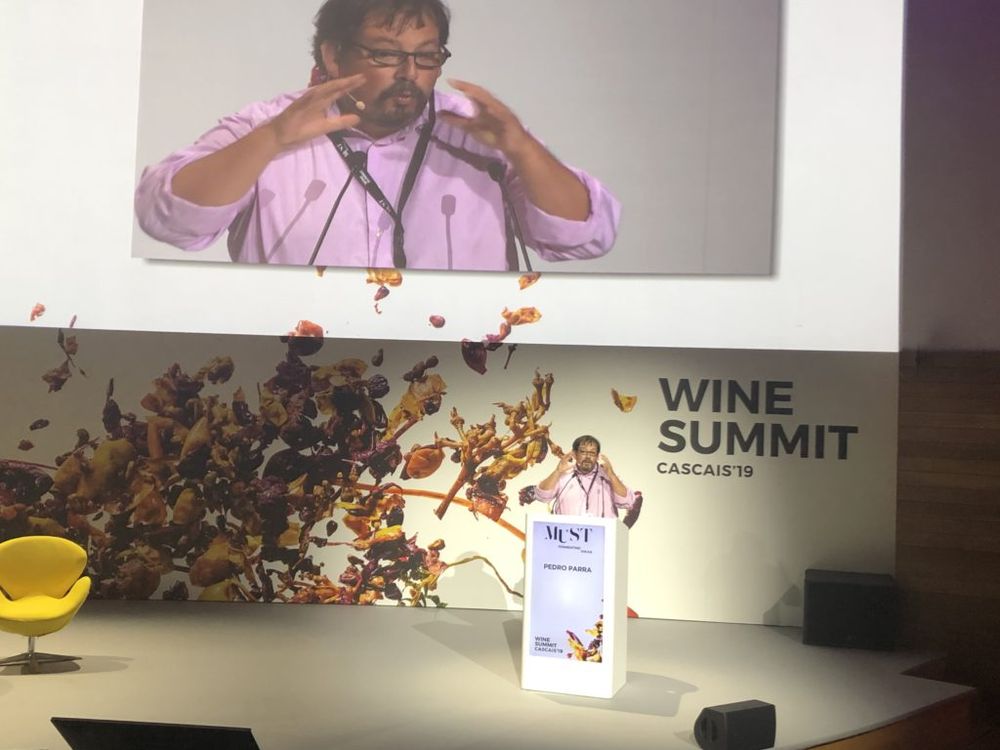
Pedro Parra on the complexity and simplicity of terroir
Pedro Parra more than succeeded in bringing the complex world of terroir to life. Like a real life ‘Stig of The Dump’ he said it must have dug at least 35,000 pits in his life trying to understand what terroir is all about. But (very) simply it all comes down not to just the soils, but more the rocks and stones that make up those soils. They are what gives you the DNA of any particular terroir.
“People have a serious misunderstanding of terroir,” stressed Parra.“It all starts with the stones in the soil. That is the key,” he said. “You can’t change the style of wine because of the terroir, it’s what you have. Your terroir will dictate the kind of wine you can make. Terroir is about geology…It’s why some rocks allow any stupid winemaker to make good wine.”
It’s also why it so hard if not impossible, explained Parra, to describe one vineyard as having one set terroir as the likelihood is the make up of the rocks and stones that lie underneath every vine is different across all parts of that vineyard. It’s why in Burgundy the top soil might be the same, but the rocks below will be different meaning the wines you make will be like having “a McDonalds or Michelin star meal” from the same vineyard.
“There are no books on terroir, no lessons on terroir, in fact there are not many terroir experts in the world, said Parra. He claimed there was only five or six real terroir experts in the world, and even they say terroir in different ways, with their own specific areas of interest.
It’s quite possible, he said, to be a terroir expert and only specialise in vineyards with a particular rock type, like limestone or gravel. But even then there could be 12 types of clay, so what kind of clay are you talking about? “It’s like comparing Formula 1 to Indy Car,” he claimed.
In fact so different are the wines you can make from those rock types that he would like to see dedicated tastings where you only saw wines made from vineyards with that specific rock.
He describes Oregon as being like a “bipolar region” such are the differences in the geology and rocks in its vineyards. “You can can have beautiful, elegant wines and then hard, tannic wines from the same vineyard due to make up and depth of the soils.”
So much food for thought you were left feeling mentally full after each session, never mind three days of the conference. But that is what MUST is all about. Literally providing you with so much content for you to absorb, dissect, and, yes, ferment.
* In Parts Two and Three of our reports from MUST we turn the spotlight first on the consumer and what the wine industry needs to be doing to keep up to speed with changes in consumer trends and behaviour. Then we drill down into worlds of natural and orange wines and why they are increasingly becoming the go to wines both for winemakers and consumers.






